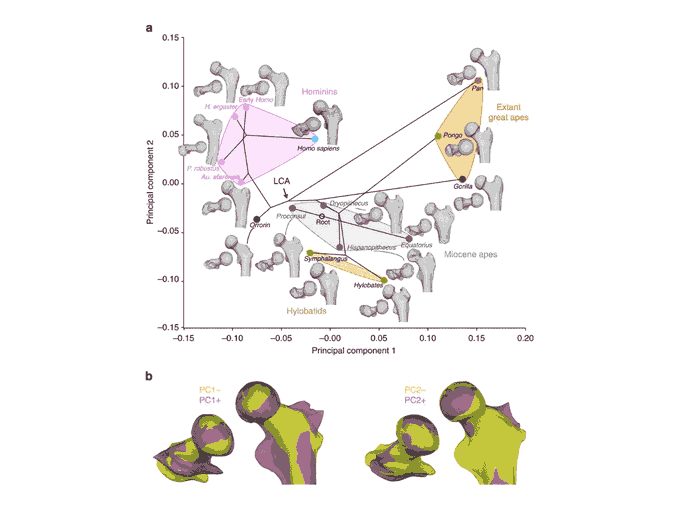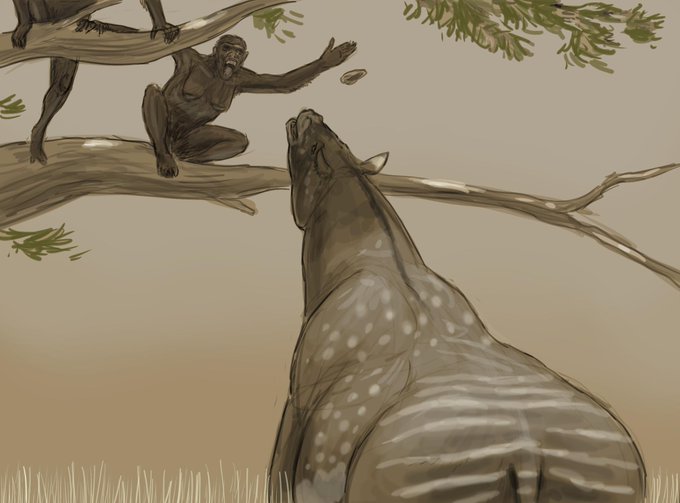homininsのTwitterイラスト検索結果。 23 件
There aren't a lot of fantasy settings based on prehistoric stuff these days. I'll make some conscepts for one as an exercise.
Basically non-avian dinosaurs survived to coexist with hominins and there is magic.
Congratulations to Svante Pääbo, my PhD supervisor, for his #NobelPrize “for his discoveries concerning the genomes of extinct hominins and human evolution” @MPI_EVA_Leipzig
A variety of giant "tortoises" shared the planet with humans and other hominins during the Pleistocene and Holocene. Compare their size and discover where they lived with this amazing poster.
Design by @JoschuaKnuppe
https://t.co/TjCpIbUBak
#FossilFriday Leti (U. W. 110) is the first skull of a Homo naledi child found. This pic compares its 3D reconstruction with other Homo naledi specimens (top) and other hominins (bottom). Credit: Brophy J.K. et al. (2021)
"hominins overcame major ecological challenges while relying on technological strategies that remained essentially unchanged"
Oldowan Technology Amid Shifting Environments ∼2.03–1.83 Million Years Ago https://t.co/92xngn1zT4
Revision of hip flexor anatomy and function in modern humans, and implications for the evolution of hominin bipedalism by Jayc Sedlmayr, Karl T. Bates, @JonathanWisco and @paleofox is now out:
https://t.co/UT3T3nfHzd
#hominin #bipedalism #hominins #psoas
#FossilFriday Some hominins from the Middle Pleistocene in China, from L to R: Hualongdong 6 , Zhoukoudian 12, Hexian, Dali.
MRD-VP-1/1 was the first relatively complete skull known for Australopithecus anamensis. Its similarities with later #hominin species like Au. africanus and Paranthropus may suggest that such traits evolved in the common ancestor of all bipedal hominins. #paleoanthropology
A 2013 analysis by @AlmecijaSergio and coworkers put the Orrorin femur into context of Miocene apes, fossil hominins, and living apes. Chimpanzees and gorillas diverge strongly in their femoral morphology from their close living and fossil relatives.
The story of Middle Pleistocene Homo erectus is a fascinating case in the history of science. Fossil hominins from the lower cave at Zhoukoudian, China, are Middle Pleistocene in age, and were the model of Homo erectus from the 1950s up to the 1980s.
The fossil hominins from Zhoukoudian, China, are among the best known Homo erectus samples. Approximately the same age as fossils from Spain attributed to H. antecessor, the connection between these #hominin populations is currently unknown. #paleoanthropology
Few fossil #hominin samples preserve evidence of the postcranial skeleton in abundance, but Homo naledi from the Dinaledi Chamber is one of them. These fossils are only around 250,000 years old, but the scapula resembles some of the earliest known hominins. #paleoanthropology
KNM-ER 1470 is one of the most iconic fossils in human origins. Found in 1972 it remains an outlier: brain size larger than other large-toothed hominins. Today scientists attribute it and a handful of other fossils to Homo rudolfensis. #hominin #paleoanthropology
"...humans have a 'unique ecological plasticity' that put our ancestors at an advantage over other hominins."
Maybe we should update the scientific name for the surviving human species.
Point of Exquisite Suspension: Behold Homo Sapiens Plasticus? https://t.co/UitakbKaNe
This week's #FossilFriday entry is our recently published Paranthropus robustus #fossil from the site of #drimolen #SouthAfrica. A joint effort between @latrobe @UjPalaeo @WUSTL @HumanOriginsASU and others from around the world! New hominins coming soon....
Consumption of animals helped hominins to grow bigger brains, but is it still so important? @sujatagupta https://t.co/HLh27yw69u via @NatureNews
Consumption of animals helped hominins to grow bigger brains, but is it still so important? @sujatagupta https://t.co/HLh27yw69u via @NatureNews
Early hominins evolved within non-analog ecosystems. Eastern African communities of large-bodied mammalian herbivores are ecosystem engineers and shape biotic communities that differed markedly from those today until ∼700,000 y ago. https://t.co/4eLu4XU1CC
Results from the #paleostream! More humans. Sahelanthropus, a Denisovan, Australopithecus sebida and a gay H. erectus couple.
#paleoart #hominins #africa #art #sketching #sciart
Consumption of animals helped hominins to grow bigger brains, but is it still so important? @sujatagupta https://t.co/HLh27yw69u via @NatureNews




































